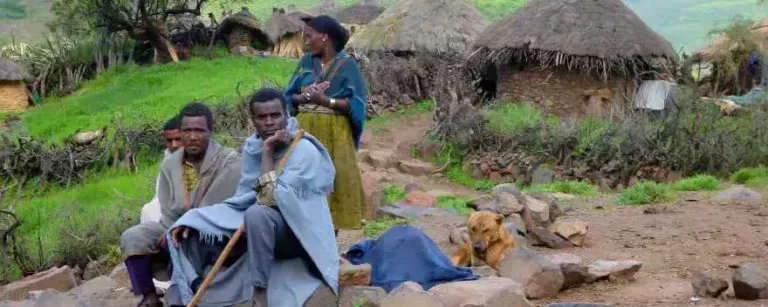Nestled amidst the desert and savannah, Harar, the fortified Walled City, stands as a true testament to Ethiopia’s rich history and cultural diversity. Regarded as the fourth holy city of Islam, Harar boasts 82 mosques and 102 houses of prayer, some dating back to the 10th century. The city’s unique architectural charm, a combination of one-storey traditional houses and two-storey Indian-style buildings, sets it apart from other Muslim cities. In this blog post, we will embark on a journey to explore the enchanting city of Harar, its captivating history, and the exceptional craftsmanship that defines its identity.
The Fascinating History of Harar
Harar’s history dates back centuries, with its walls built between the 13th and 16th centuries to fortify the city. During its illustrious past, Harar served as the capital of the Kingdom of Harar from 1520 to 1568, witnessing periods of prosperity as a center of commerce and Quranic teachings in the 16th to 19th centuries. In the 17th century, Harar and its surrounding areas became an independent emirate before being occupied by Egypt. Ultimately, in 1877, it was incorporated into Ethiopia, adding another layer of cultural influence to this vibrant city.
Immersing in Harari Culture
The people of Harar, known as Hararis, take great pride in their cultural heritage. The city is known for its rich traditions, such as the unique Harari language, handicrafts, and cuisine. Indulge in the taste of Harar’s famed coffee, renowned for its distinct flavor and preparation rituals that have been passed down through generations.
Harar’s Unique Architecture and Cultural Heritage
The architectural layout of Harar is truly exceptional, distinct from any other city in Ethiopia or among Muslim cities worldwide. The labyrinth of narrow streets and high facades of houses creates an awe-inspiring sight. The blend of traditional one-storey houses, Indian-style two-storey buildings, and the combination of both showcases the city’s rich cultural diversity and historical evolution.
The heart of Harar lies within the ancient walls, known as Harar Jugol. Stepping inside this walled city is like stepping into a living museum, where traditions and customs are well-preserved by its warm and welcoming residents. Stroll through narrow alleys and labyrinthine streets lined with colorful houses adorned with wooden doors and intricate designs. This unique urban layout is a testament to the remarkable urban planning of the past.
Artisanship and Interior Design
Harar is renowned for its skilled artisans, who specialize in weaving, basketry, and book-binding. The city’s artistic craftsmanship extends to the interior design of houses, where intricate patterns and vibrant colors create a unique ambiance. Harari houses are not just dwellings but living works of art that reflect the city’s cultural pride.
A UNESCO World Heritage Site
In recognition of its outstanding cultural significance, Harar was designated as a UNESCO World Heritage site. The preservation of its historical sites, including ancient mosques, traditional houses, and the harmonious coexistence of various cultures, contributed to this prestigious accolade.
Harar’s Cultural Festivals
Hyena Feeding Ceremony:
Witness a unique tradition in Harar where locals feed hyenas at night outside the city walls. It is believed to have originated from the past when hyenas were considered protectors against evil spirits.
Harari Wedding Celebrations:
If you’re lucky, you might get the chance to attend a traditional Harari wedding, a colorful and joyous occasion filled with music, dance, and cultural rituals.
Must-Visit Historical Sites
Rimbaud House:
Visit the former home of the French poet Arthur Rimbaud, who resided in Harar for a significant period. The house is now a museum that offers insight into the poet’s life and his influence on Harari culture.
Harar Museum:
Delve into the city’s history and heritage at the Harar Museum, where artifacts and exhibits showcase the evolution of Harari civilization.
Harar, the Walled City, captivates visitors with its unparalleled cultural heritage, ancient architecture, and exceptional craftsmanship. As the fourth holy city of Islam, it stands as a symbol of religious and cultural diversity in Ethiopia. Whether wandering through the maze-like streets, admiring the unique blend of architectural styles, or exploring the artisanship that defines the city’s identity, Harar promises an enchanting and enriching experience for every traveler. Discover the treasures of this UNESCO World Heritage site and immerse yourself in the vibrant tapestry of Harar’s history and culture.







